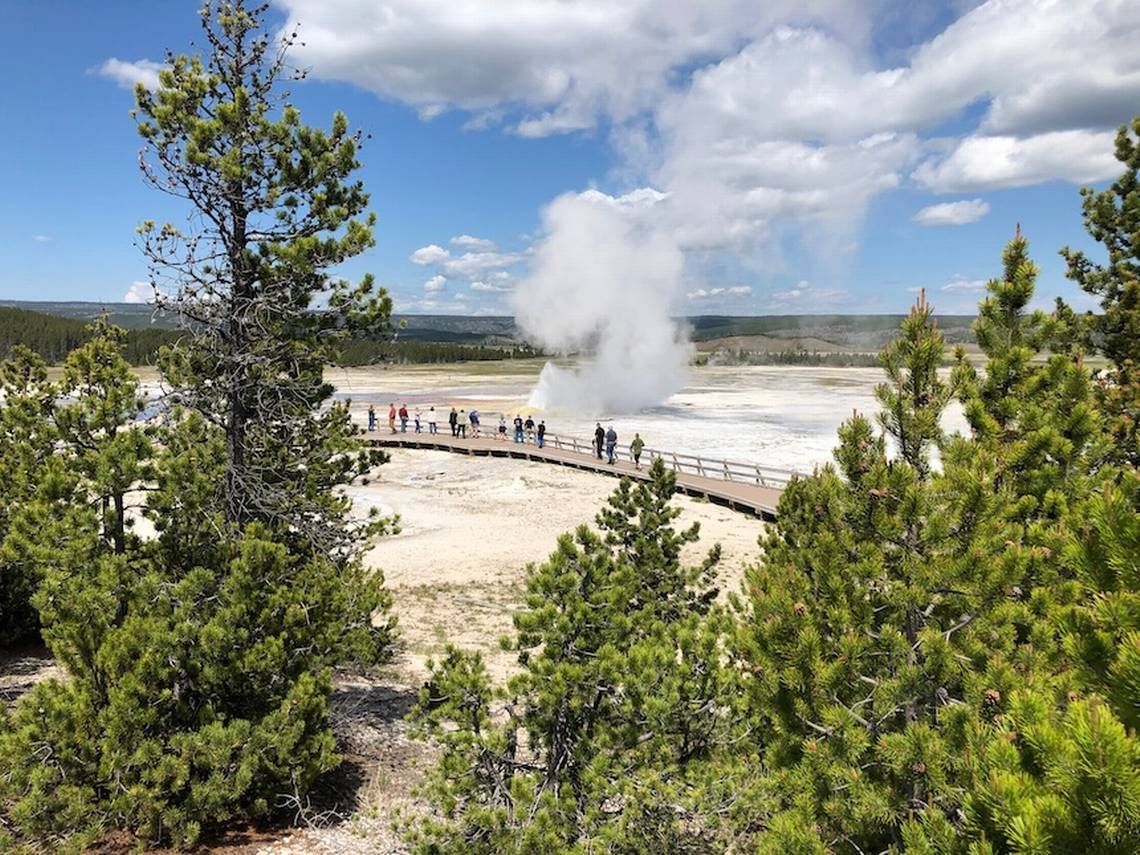
www.yahoo.com
Yellowstone hotspot powering volcano system shocks researchers — by millions of years
“About 20 years ago, this story might have been dismissed as fantasy.”
Culture & Entertainment
A hotspot that powers the Yellowstone volcanic system could be much, much older than scientists originally thought.
For years, scientists have thought the Yellowstone hotspot, the source of heat that powers the area’s volcanoes, was about 17 million years old, according to the U.S. Geological Survey.
New research, however, suggests the hotspot is millions of years older. It could even be more than 50 million years old, USGS said.
“About 20 years ago, this story might have been dismissed as fantasy,” geologists said. “Through years of careful accumulation of data and evidence, however, the case has become quite strong—the Yellowstone hotspot is a long-lived feature that dates back to at least 50 million years ago, and perhaps even earlier.”
Yellowstone sits on a hotspot that’s powered by hot material that could go close to the Earth’s core, according to USGS.
The hot material can rise and melt near the surface, and creates magma that travels through magma chambers underground. That then gives off heat that makes the geysers and hot springs, USGS reported.
Scientists have looked at a “trail of volcanism” and volcanic rocks to help determine the hot springs’ age, geologists said.
“As the North American plate moves to the southwest over the hotspot, the center of volcanic activity therefore appears to be migrating to the northeast,” USGS said. “There is thus a trail of volcanism that stretches to the southwest from present-day Yellowstone across the Snake River Plain of southern Idaho, getting progressively older along the trend.”
The trail leads to older volcanic centers that could be viewed as “ancient Yellowstones,” USGS said. It’s the start of a 17 million-year-old volcanic system that scientists traditionally used to help date the Yellowstone hotspot.
“Yellowstone-style volcanic eruptions weren’t the only thing happening 17 million years ago,” USGS said. “That time period also saw the eruption of the Columbia River Basalt—a tremendous outpouring of lava from vents in eastern Oregon and Washington and western Idaho.”
Scientists thought the Columbia River Basalt eruptions were the start of the Yellowstone hotspot, according to USGS.
As time went on, though, researchers found new evidence that suggests the Yellowstone hotspot was active before the Columbia River Basalt eruption by millions of years, geologists said.
There’s evidence that a massive volcanic eruption happened 50 million to 55 million years ago off the West Coast, according to USGS. Lava still exists on the ocean floor after it was “scraped up and welded” onto a coastline, USGS said.
“This so-called Siletzia terrane has chemical and physical characteristics that suggest it formed due to a mantle plume, and it has a composition similar to the Columbia River Basalts, indicating that the two large lava flow provinces are related,” according to USGS. “Might the Siletzia terrane have formed due to an early version of the Yellowstone hotspot?”
If the Yellowstone hotspot caused the eruption, the North American tectonic plate would’ve overridden the hotspot about 40 million years ago, USGS said.
There is evidence in volcanic rocks in Oregon, California and Washington that appear to be made from a younger Yellowstone hotspot, according to USGS.
Tectonic plates, however, could have caused the rocks to shift and changed the hotspot, USGS said. The tectonic forces would have blocked the flow of the Yellowstone hotspot from reaching the surface.
“Magma was still being generated, but it was backing up behind the barrier,” USGS said. “The accumulated magma finally punched through 17 million years ago, breaking the ancient slab and resulting in the Columbia River Basalt eruptions. Then began the progression of volcanic calderas to present-day Yellowstone.”
Changes in volcanic activity in Yellowstone sometimes set off panic because an eruption of Yellowstone’s “supervolcano” would have regional and global consequences, McClatchy News reported.
“Such a giant eruption would have regional effects such as falling ash and short-term (years to decades) changes to global climate,” USGS said on its website. “Those parts of the surrounding states of Montana, Idaho, and Wyoming that are closest to Yellowstone would be affected by pyroclastic flows, while other places in the United States would be impacted by falling ash (the amount of ash would decrease with distance from the eruption site).”
The change in the hotspot’s age, however, seems to have no effect on what scientists think about the risk of eruption.
The USGS doesn’t think an eruption at Yellowstone is likely for thousands of years. The current alert level at the Yellowstone Volcano Observatory is green, which is normal.
























































